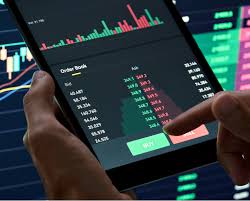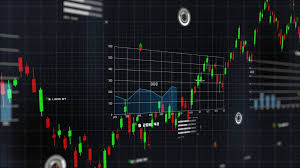
Crypto Trading Forecast: Navigating the Future of Cryptocurrency Investments
The world of cryptocurrency trading is constantly evolving, driven by innovation, market dynamics, and regulatory changes. As investors and traders seek to capitalize on opportunities within this volatile market, having a solid understanding of crypto trading forecasts becomes essential. In this article, we will explore the factors influencing cryptocurrency prices, the methodologies behind forecasting, and actionable insights that can help traders make informed decisions. For more resources related to crypto trading, visit Crypto Trading Forecast http://recursosanimador.com/scripts/librovisitas2.php?pagina=10086.
The Basics of Cryptocurrency Trading Forecasting
Crypto trading forecasting involves analyzing market trends, historical data, and economic indicators to predict future price movements. This process can be intricate, as the market is influenced by a variety of factors, including:
- Market Sentiment: The overall attitude of investors towards the cryptocurrency market can significantly impact prices. Positive news can lead to buying pressure, while negative news can trigger panic selling.
- Technical Analysis: Many traders utilize technical indicators, such as moving averages and Relative Strength Index (RSI), to forecast short-term price movements.
- Fundamental Analysis: This analysis involves examining a cryptocurrency’s underlying technology, the team behind it, market adoption, and regulatory environment.
- Macroeconomic Factors: Global economic conditions, including inflation rates, interest rates, and geopolitical events, can affect investor behavior in the crypto market.
Technical Analysis: Tools for Traders
Technical analysis is one of the most popular methods among crypto traders. By examining historical price charts and trading volumes, traders can identify patterns and trends that may indicate future movements. Here are some core technical analysis components:
1. Charts and Patterns
Traders utilize various types of charts, such as candlestick charts and bar charts, to visualize market movements. Recognizing specific patterns like head-and-shoulders, flags, and triangles can provide valuable insights into potential price reversals or continuations.
2. Indicators
There are numerous indicators traders can utilize. Here are a few:
- Moving Averages: This smoothens price data to identify trends over specific periods.
- MACD (Moving Average Convergence Divergence): A trend-following momentum indicator that shows the relationship between two moving averages of a security’s price.
- RSI (Relative Strength Index): This momentum oscillator measures the speed and change of price movements, helping traders to identify overbought or oversold conditions.

Fundamental Analysis: The Bigger Picture
While technical analysis focuses on price movements, fundamental analysis examines the intrinsic value of a cryptocurrency. Here are the key aspects to consider:
1. Technology and Use Case
Understanding a cryptocurrency’s technology and its real-world applications is crucial. Is the technology scalable? Does it solve a specific problem? These questions can significantly influence long-term value.
2. Regulatory Environment
Cryptocurrency regulations vary dramatically by country. An unfavorable regulatory environment can hamper adoption and negatively affect prices. Staying updated on legislative changes is vital for predicting market shifts.
3. Community and Developer Engagement
A strong, active community and a dedicated development team often indicate a cryptocurrency’s potential for growth. Monitoring social media channels, forums, and development activity can provide insights into future movements.
Market Sentiment: The Pulse of Trading
Market sentiment can drive short-term price swings, making it key to understand in the context of forecasting. Traders often use sentiment analysis tools to gauge the mood of the market. Here are some sources of market sentiment data:
- Social Media Trends: Platforms like Twitter and Reddit can provide a pulse on community sentiment.
- Panic and Euphoria Indicators: Tools like the Fear and Greed Index can help identify extremes in market sentiment.
- News Aggregation: Keeping track of news articles and announcements can highlight factors affecting market sentiment.
Making Predictions: The Role of Machine Learning
As technology advances, many traders are turning to artificial intelligence and machine learning to enhance forecasting accuracy. Algorithms can analyze vast datasets at incredible speeds, identifying patterns that may not be visible to human traders. Here are some innovative methods:
1. Predictive Analytics
By applying statistical techniques to historical data, predictive analytics can help forecast future price movements with some degree of accuracy.
2. Sentiment Analysis Algorithms
These algorithms can analyze social media posts, news articles, and discussion forums to determine public sentiment towards specific cryptocurrencies, providing additional predictive insights.
Risk Management Strategies
No trading strategy is complete without a robust risk management plan. As trading cryptocurrency can be extremely risky, here are some strategies to help mitigate potential losses:
- Diversification: Spread investments across different cryptocurrencies to reduce exposure.
- Stop-Loss Orders: Setting stop-loss orders can limit losses by automatically closing trades at predetermined prices.
- Position Sizing: Determine the amount to invest in a trade based on risk tolerance and account size.
Conclusion: The Future of Crypto Trading
As cryptocurrency continues to gain popularity, the importance of effective forecasting tools and strategies becomes increasingly vital for traders. By combining technical analysis, fundamental insights, and understanding market sentiments, traders can make more informed decisions. With advancements in technology, including machine learning, the landscape of crypto trading forecasting is set to evolve even further, providing traders with sophisticated tools to navigate this dynamic market.
In summary, mastering crypto trading forecasting requires a blend of analytical skills, market awareness, and risk management. As you embark on this journey, stay informed, remain adaptable, and continuously refine your trading strategies to thrive in the exciting world of cryptocurrency.
Leave a Reply